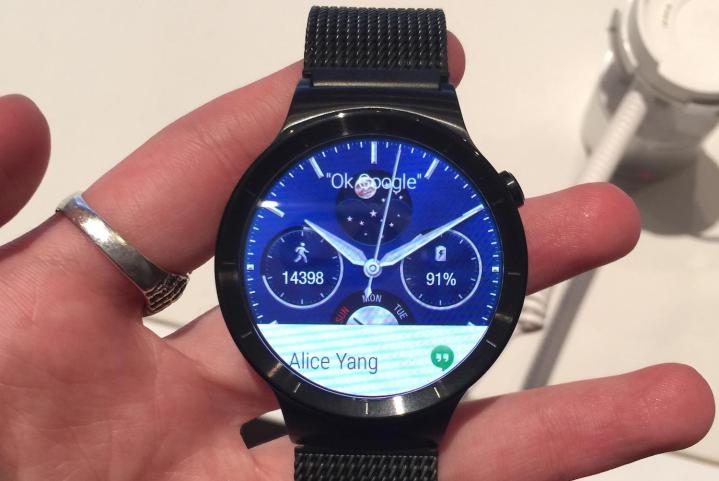
Now that it’s shown off the Huawei Watch, the Chinese company is bargaining with Google to customize Android Wear to suit its needs. Huawei is known for the heavily customized skin it places over Android on its phones, which essentially makes them look like they’re running iOS. As such, it’s hardly surprising that Huawei wants to tweak
“We wish [we had more freedom to customize the Android Wear platform],” Yang Yong, Huawei’s Vice President of Product Management told TrustedReviews, adding that, “We need to communicate with Google how we can do that. …
Yong argues that customers want to have smartwatches that are more personal and representative of their own style. He seems to think that one of the biggest issues for Android Wear watch makers is that it’s hard to differentiate their smartwatches from everyone else’s. While Huawei has certainly forged its own path with a slightly smaller, round watch face and customizable straps, it’s still not too different from the Moto 360 or LG’s Watch Urbane.
“People have different appetites for the watch,” Yong said. “What we are doing is trying to make from the hardware view, in the design view, in the software view, in the surface view, we are trying to differentiate our watch to appeal to the consumers who will use it.”
Huawei is not the only company who thinks Android Wear could use more features. LG launched a WebOS version of its Urbane smartwatch, which adds a few new features, including its own LTE, and a totally different interface for accessing apps. Samsung has long been making Tizen smartwatches to add its own features, too. Recently, Asus’ CEO hinted that the next ZenWatch may not even run
Only time (sorry) will tell if Google decides to open up Android Wear to customization, or opts to add new features and a redesign of its own making in the future. In the meantime, it seems manufacturers will continue to push the envelope with their own smartwatch operating systems.
Editors' Recommendations
- This Android phone is so bad I couldn’t review it
- The OnePlus Watch 2 is the Wear OS smartwatch I’ve been waiting for
- Ignore the rumors — this iconic phone brand isn’t going away
- One of the first Android phones of 2024 isn’t what you expect
- The new Garmin Lily 2 isn’t like other smartwatches